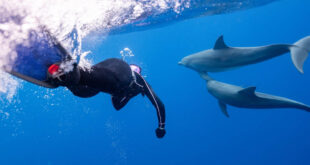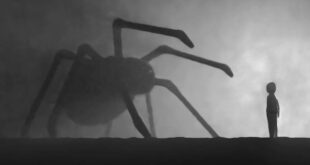For years, the entertainment industry has kept us on our toes with movies such as Cast Away. Several such movies have been made throughout the years, depicting fictional accounts of people being stranded in deserted islands for days, months and sometimes years. Imagine being a castaway. Being stranded on an island, all alone, not knowing where you are, and no one else knowing either; limiting your chances of being rescued to nearly null. These stories don’t just happen in movies, and in fact, some movies were loosely based on real-life castaways.
Throughout history, many brave men and women have unfortunately been stranded on remote islands. Their survival depended on their intelligence, such as harvesting rainwater, making fish traps and building primitive huts for shelter. There are many castaway stories that seem so unrealistic, that we have a hard time believing them to be true. Here, we are listing the top 10 real-life castaway stories of people and the things they had to do in order to survive.
1. Jose Salvador Alvarenga, 37, from El Salvador, was stranded on a remote island for 14 months before being rescued.

In 2012, Jose Salvador Alvarenga and his companion went out on a fishing trip. The duo had been fishing for several years and was the main source of their income. However, the November 2012 fishing trip would change both their lives forever. As the duo headed out towards the open sea, they were caught in a storm, that pushed them far away from their home land and into the middle of nowhere. When the storm cleared, they noticed that there was no visible land. Since the men had no equipment with them, they were unable to steer their boat or call for help.
The men managed to survive off fish, turtles and harvesting sea water. However, four weeks later, the other man gave up on the raw diet, causing him to fall ill. Jose managed to fish and harvest rainwater for almost 14 months before finally seeing a piece of land in sight. The battered 24-foot fiberglass boat washed up on the remote Marshall Islands in late January 2014, where he was helped by a couple who were inhabitants of the island. Locals alerted authorities, who managed to airlift Jose from the island and take him back to El Salvador to be reunited with his family. (source)
2. Poon Lim survived for 133 days in the sea as a castaway. He would later be awarded the world record for time spent surviving adrift at sea.
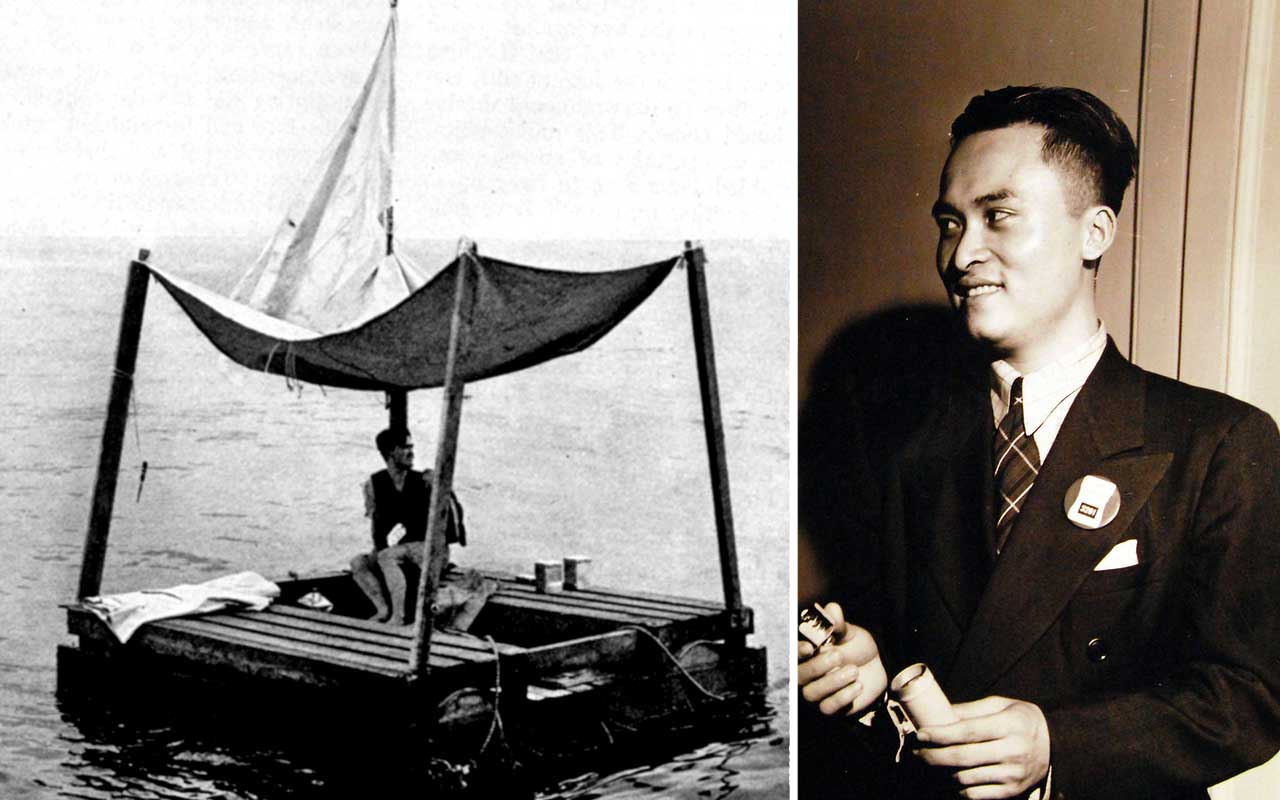
Born on March 8, 1918, in Hainan, China, Poon Lim was born into a blessed family. His brothers worked at factories and sent the family money, which allowed him to attend school. When he was 16, his father believed that he would have a better life somewhere else. He also feared that he would be drafted to fight against the rapidly advancing Japanese, if he stayed in China. So, Poon Lim was sent to join one of his brothers on a British passenger freight ship, where he would work as a sailor.
Poon Lim boarded the Ben Lomond, which was a slow moving ship en route to Surinam from Cape Town. During the voyage, the German U-boat U-172 intercepted it, and on November 23, 1943 it struck the ship with two torpedoes. As the ship sank, Poon Lim was the only one of 53 on board, who was able to grab a life jacket and jump overboard.
Poon Lim spent the next two hours floating until he found an eight-foot square wooden raft. The raft contained several tins of biscuits, a 10 gallon jug of water, some chocolate, a bag of sugar lumps, some flares, two smoke pots and a flashlight. At first, he relied on the food found aboard the raft but as days went by, supplies started to diminish. Poon Lim then had to rely on fish and harvesting rain water in order to survive. He even managed to remove some nails and use them as hooks to catch large fish, including sharks.
For 133 days, he suffered sunburn, seasickness and watched many boats go by, with none of them offering to help. To keep track of the days, he tied knots in a rope and counted full moons. After 133 days, three Brazilian fishermen discovered the raft and he was finally rescued. When he was discovered, he lost 19 lbs (9 kg) and had to spend four weeks in a hospital. But, Poon Lim managed to survive and King George VI bestowed a British Empire Medal (BEM) on him. The Royal Navy even incorporated his tale into manuals of survival techniques. (source)
3. Robertson family, a family of six was stranded in the middle of the sea for six weeks, after whales slammed into the hull of the yacht.

During the 1970’s, retired merchant navy officer Dougal Robertson was living an isolated life with his family. He owned a dairy farm where they worked and lived together, cut off from the rest of the world. In 1971, Robertson decided that it would help his children to learn about the world, if they were able to sail around it. Robertson wanted to educate his children in the ‘university of life’, and so, the family set out into the open ocean on board a 43ft (13m) wooden schooner called Lucette.
The yacht was purchased by selling the farm; which was their life savings. On January 27, 1971, the family departed from Falmouth in Cornwall. Robertson was the only person with some experience in sailing but with zero planning, they set off on a journey around the globe. Over the next year-and-a-half the family sailed across the Atlantic, and it seemed as if things were working out. However, 17 months into their voyage, in the middle of the Pacific, the boat was struck by a pod of whales. The impact was so powerful that the hull cracked and the boat sunk extremely fast. I bet you won’t catch him on a trip whale watching california!
The family scrambled and jumped aboard an inflatable life raft and dinghy. The raft had some food and water, which they used to manage for a few days. Then, they had to collect rainwater and fish to survive. After 16 days, the life raft gave way, forcing the family to crowd into the dinghy. For 38 long days, the six family members drifted without sufficient food and water until they came across a Japanese fishing trawler, the Toka Maru II; which rescued them. Two of the family members went on to write books about their adventurous journey; one of which was made into a movie. (source)
4. Steven Callahan, an American author, naval architect, inventor, and sailor, survived for 76 days adrift in the Atlantic Ocean on a life raft.
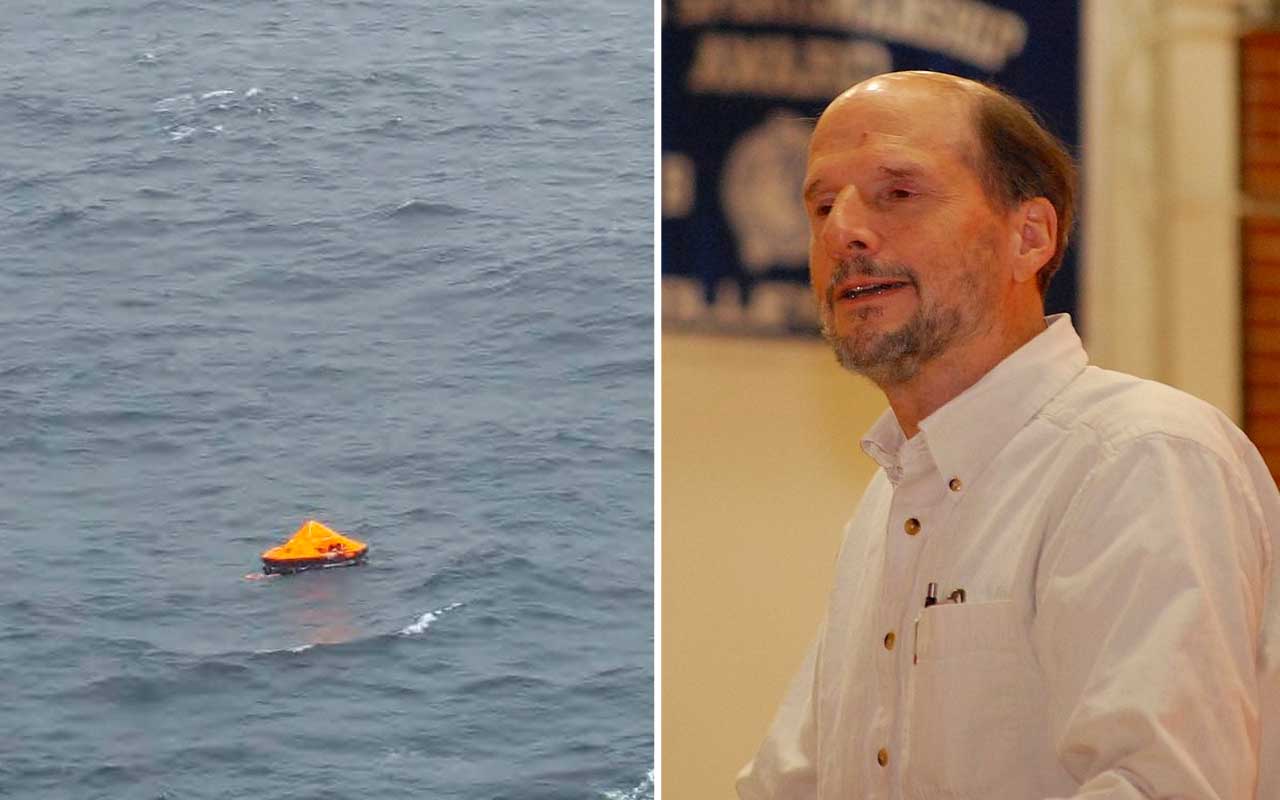
Steven Callahan holds a degree in Philosophy, is a naval architect by training, and is a designer and builder of boats. He has lived aboard boats for years and has raced and cruised all kinds. In 1981, Callahan departed Newport in Rhode Island in a 6.5 meter (21.3 foot) sloop he designed and built himself. He single-handedly sailed the boat to Bermuda, then continued the voyage to England.
As Callahan was crossing the Atlantic, bad weather damaged his boat. He did, however, manage to repair it and continue on with his voyage. On January 29, 1982, heading for Antigua, his boat was struck by another object, which Callahan suspected to be a whale. After the collision, the boat began to fill with water. Understanding the severity of the damage, Callahan managed to inflate a six person life raft. He then used the raft to stay afloat while diving several times to retrieve a piece of cushion, a sleeping bag, and an emergency kit containing, among other things, some food, navigation charts, a short spear, flares, torch, solar stills for producing drinking water and a copy of Sea Survival, a survival manual written by Dougal Robertson, a fellow ocean survivor.
The waves then started pushing him further away into the open ocean. After surviving for days on the food aboard the raft, Callahan then turned towards fish such as mahi-mahi, flying fish, barnacles, and birds that he captured. As he was drifting, he saw nine ships, but none of them spotted him. Instead of relying on ships to rescue him, Callahan relied on himself by regularly exercising, navigating, prioritizing problems, making repairs and fishing. On the 76th day of his voyage, a fisherman aboard a fishing vessel spotted him; leading to his rescue. He still enjoys sailing and the sea, which he calls the world’s greatest wilderness. During the filming of Life of Pi, director Ang Lee consulted Callahan, so that his experiences could be incorporated to bring depth and authenticity to the movie. (source)
5. Ada Blackjack was the lone survivor of a 1921 expedition. She is dubbed as the “female Robinson Crusoe” for her incredible castaway story.
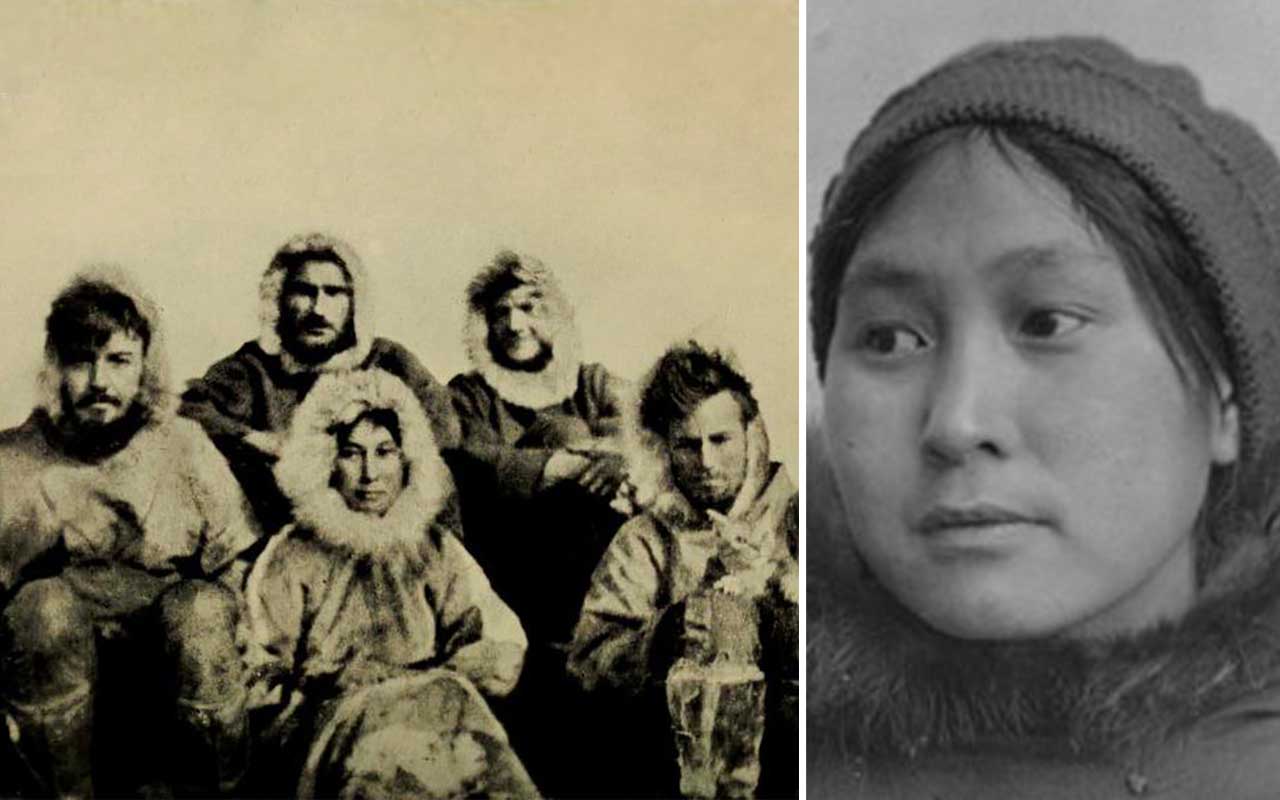
Blackjack—née Ada Deletuk—was born in 1898, in Spruce Creek, Alaska. Although she was Inupiat, she was not raised to follow the customs and practices. She married at a young age but her husband abandoned her in 1921. Her only surviving son was suffering from tuberculosis and Blackjack vowed that she would find a way to cure him. She placed him in an orphanage and was looking for a job when she heard of an expedition heading for Wrangel Island. The team of men were in search of an Alaska Native who spoke English.
Arctic explorer Vilhjalmur Stefansson put together the team of five and funded the entire mission to claim Wrangel Island for the British Empire; but he himself had no interest in joining them. On September 9, 1921, the inexperienced team headed north with only six months of supplies. The first year was promising but as summer came to an end, the cold harsh winter took a toll on the explorers. The ship that was en route to pickup the team at the end of their expedition had to turn around due to solid ice.
By the beginning of 1923, the team had no food, were starving and one of the men was down with illness. In a last ditch effort to save him, the rest of the men decided to leave her behind and set out on foot across the ice to Siberia in search of help. They were never seen again. The unskilled woman who had no experience in the wilderness or hunting, managed to survive for months. Finally, on August 20, 1923, almost two years after first landing on Wrangel Island, the schooner Donaldson crested the horizon to rescue the persevering seamstress. She was reunited with her son and able to afford a cure for him. (source)
6. Nakahama Manjir? was a fisherman from the village of Naka-no-hama, Tosa Province. In 1841, when he was 14, Manjir? and his friends were on a fishing trip when they shipwrecked in an island. He was only able to return to Japan in 1851.

Born on January 27, 1827, Manjir? was one of the first Japanese people to visit the United States. Even at a young age, Manjir? started to support his family and often went fishing for a living. In 1841, at the age of 14, Manjir? and his friends embarked on a fishing trip that would change their lives forever. As they were traveling, a storm caused their boat to stray off course and wreck in the island of Torishima.
Luckily, the American whaler ship John Howland was passing by the island when they spotted the men. Sadly for Manjir? and his four friends, they couldn’t return to Japan due to a law at the time. Leaving Japan was considered a punishable offense and those who dared to leave were not allowed to come back or were prosecuted. Japan isolated itself from the rest of the world during this time period, making it extremely difficult for Manjir? and his friends to return.
However, luck was on their side. At the end of the ships voyage, it docked in Honolulu, leaving the men there. Whitefield, the Captain of the ship noticed that Manjir? did not wish to leave the ship. So, he took Manjir? to the United States where he was enrolled in the Oxford School. There, he studied mainly English and navigation for a year. In 1847, Manjir? again met his friends while visiting Honolulu. By 1850, he had saved enough to make his way back to Japan. With the $600 in his pocket, Manjir? and two of his friends decided to return to Japan.
The trio bought a sail boat and set sail on December 17, 1850 and reached Okinawa on February 2, 1851. Upon their arrival, Japanese officials arrested them but treated them with courtesy. They were questioned for months and finally released to return to their homes. The men were awarded pensions and Manjir? was appointed a minor official. (source)
7. Narcisse Pelletier was a French cabin boy who at the age of 14, was shipwrecked near Rossel Island off New Guinea. He was then adopted by the aboriginal people and spent nearly two decades with them.
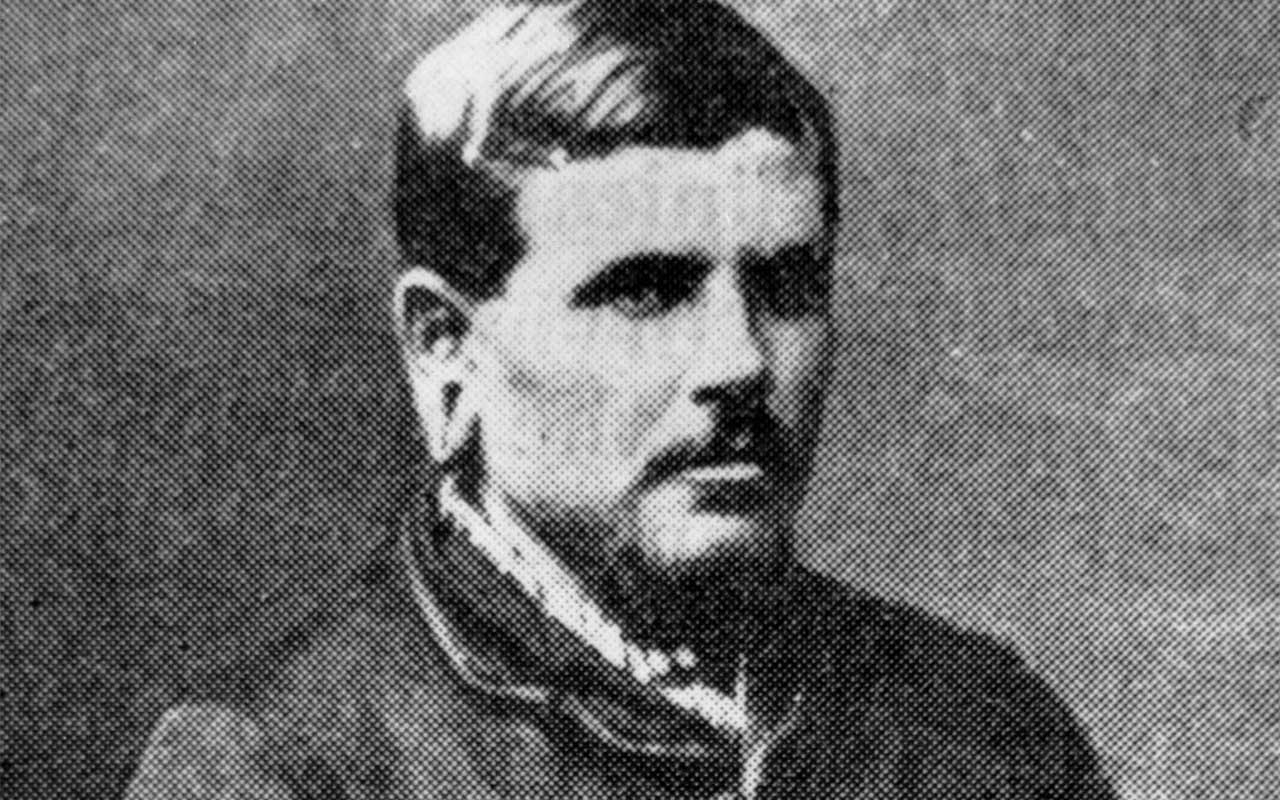
Born on January 1, 1844, in France, Narcisse Pelletier started working at a very young age. Pelletier, 14, left Marseilles in the summer of 1857, after having secured himself a job as a cabin boy on a ship named the Saint-Paul. In the fall of 1858, nearly 300 Chinese immigrants boarded the ship en-route to Australia and on September, the vessel ran into a reef near New Guinea. The ship was lodged in the reef while inhabitants from the nearby Rossel Island moved towards the ship and took everything; including the Chinese immigrants.
The captain and the crew members boarded a longboat and voyaged across the Coral Sea to Cape York, where Pelletier was abandoned. When a coastal aboriginal family found Pelletier, he was starving, malnourished, and in a bad shape. He offered them a tin cup in exchange for them to spare him. Touched by his generosity, they adopted him and nursed him back to health. Pelletier remained with them as a member of the Uutaalnganu people for seventeen years. During this time, Pelletier learned their fishing techniques and became an aboriginal warrior.
In 1875, 17 years after being abandoned in the island, Pelletier had forgotten his old life and started a new one for himself. However, he was spotted by a group of traders on an English schooner, the John Bell, en route to Brisbane. When the captain of the ship saw Pelletier with the aboriginals, he assumed that he was being held against his will. Later that night, the captain launched a rescue mission, snatching Pelletier off the island. Since he was unable to communicate with them in English, the men took him back to the ship where he explained that they completely misunderstood the situation. However, he was returned to France to reunite with his family but Pelletier wasn’t happy about the whole ordeal since he felt like he was robbed of his life. (source)
8. Ernest Shackleton, an Anglo-Irish Antarctic explorer, endured a 17-day 800-mile journey through some of the worst seas to Georgia Island and trekked across 26 miles of mountains and glaciers to reach for help.

Born on February 15, 1874, in County Kildare, Ireland, Ernest Henry Shackleton was a traveler and explorer of the poles. In 1914, on his third trip to the Arctic in the ship ‘Endurance’, Shackleton planned to cross Antarctica via the South Pole. However, in early 1915, the ship became trapped in the ice and was stranded for months. The crew hoped that the ice would break off and they will eventually be able to return home or continue with the expedition. Sadly, ten months later, the pressure from the strong sheets of ice caused the ship to crack and sink.
Shackleton and his crew who were already living on the floating ice, waited for a year to be rescued. When it was apparent that help would not arrive soon, Shackleton and some of his crew decided to head out. In April 1916, they took three boats and spent nearly 17 days crossing 800 miles of ocean to reach South Georgia. They then trekked across the island for 26 miles through harsh terrains to a whaling station where they called for help. When help arrived, Shackleton took the ship and went back for the men he had left behind. All the crew members of the ‘Endurance’ survived and were rescued by August 1916. (source)
9. Alexander Selkirk, a Scottish sailor and Royal Navy officer, was abandoned for 4 years and 4 months in an uninhabited island.
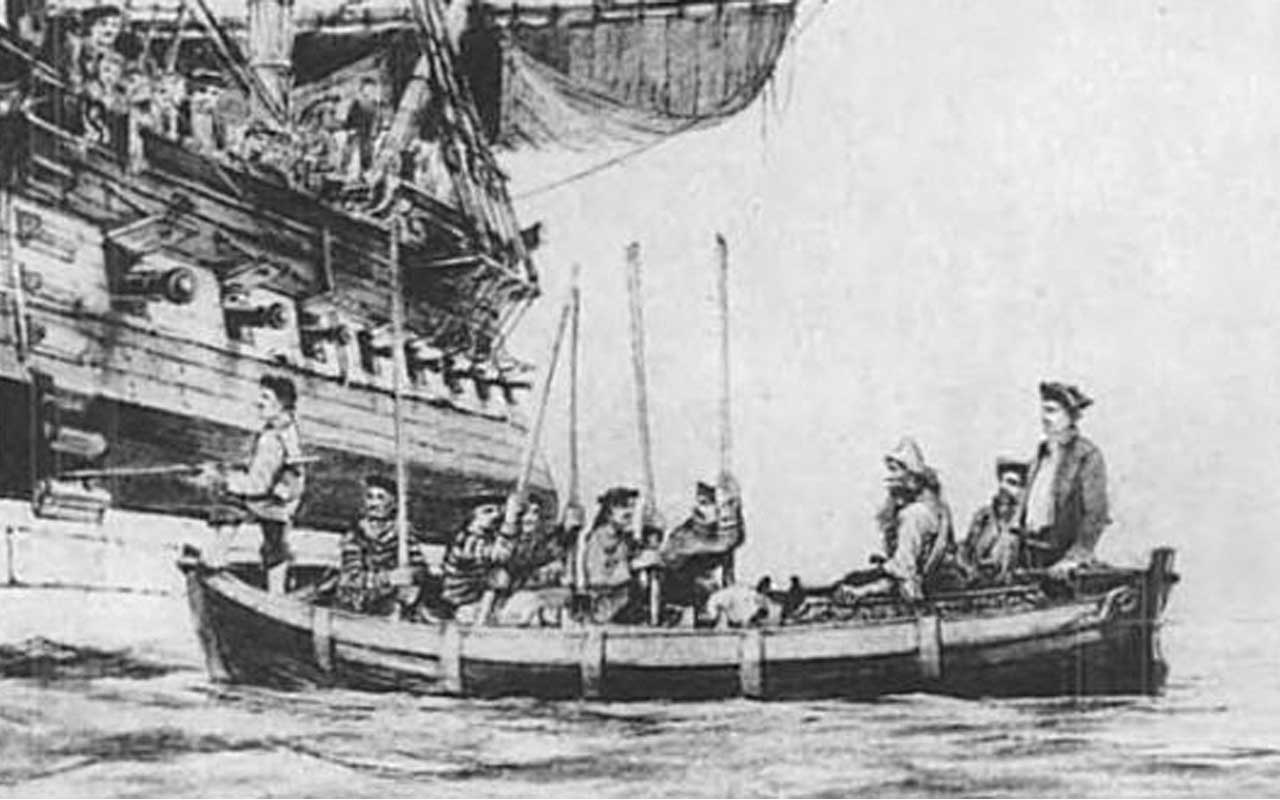
Born Alexander Selcraig in a small fishing village in Scotland in 1676, he was known to be independent and a hothead at a very young age. Growing up, he had frequent arguments with his brothers and father but one such argument caused him to leave Scotland, change his name to Alexander Selkirk and go on a privateering expedition to South America. The expedition proved to be a nightmare for Selkirk since the ship had limited provisions, was infested with pests, sickness was widespread and when the captain fell ill, the lieutenant, Thomas Stradling, took over command of the ship; making things even worse.
Finally, when the ship docked in a small uninhabited island for a short period, Selkirk refused to get back on board. Initially, he thought that every other sailor would side with him but his assumption proved false. Selkirk then had a change of heart and requested Stradling to allow him to board the ship. Stradling refused and abandoned Selkirk in the island with limited amount of supplies. The man was forced to fend for himself without help for the next four years. One of the most difficult tasks he endured during the time was loneliness.
Finally on February 1709, two British privateers dropped anchor offshore and Alexander Selkirk was rescued. In 1713, Selkirk published a book about his life and adventures, which gained him immense fame. Six years later, Daniel Defoe wrote his now famous novel: Robinson Crusoe; which many believe to be based on Alexander Selkirk’s life. (source)
10. Juana Maria, a Native American and the last surviving member of her tribe, was left behind for 18 years on San Nicolas Island, before being rescued.

In 1835, Russian sea otter hunters clashed with Native Indian people living on the remote San Nicolas Island; resulting in great loss to the native population. Fearing extinction of the Natives, missionaries from the Santa Barbara Mission, requested the remaining members be moved to the mainland for their own safety. A ship was dispatched to pick up the surviving members but heavy winds caused the ship to leave early. This resulted in Juana Maria to be left behind. Maria then had to fend for herself, hide in caves and evade Russian hunters for 18 years.
The missionaries realized their mistake upon arrival and had traveled back various times to rescue her, but Maria was well hidden from everyone. Finally, in 1853, a party headed by sea otter hunter George Nidever found her alive and well. She was wearing clothes sewn by herself and a shelter that she made using anything and everything she could find. She willingly went with her rescuers and Nidever took her home to live with him and his wife. However, the new world diet did not treat her well. Seven weeks after being rescued, Maria fell ill, never to wake up again. (source)
